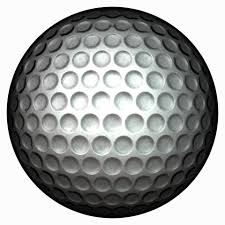Why are there dimples on the golf ball?« Back to Questions List
|
Most of the golf balls have lots of dimples. The dimples, on an average, have a depth of about 0.010 inch. Golf balls with dimples travel twice as fast as balls without dimples. How was this noticed? The golfers observed that the smooth balls that they were using performed well when they had been beaten up a number of times which resulted in lot of bumps and cuts in the ball.
For a smooth ball, the air pressure on the bottom of ball is higher than the air pressure at the top. This imbalance in pressure creates an upward force on the ball. The spinning action of the ball contributes about one-half of a golf ball’s lift. Compared to smooth balls, those with dimples provide a much better lift by optimizing the lift force.
There are two kinds of airflow called laminar and turbulent. Laminar airflow causes less drag but causes separation between the surface of the object and air. Turbulent airflow creates more drag initially but does not cause any separation. The dimples in the ball act as ‘turbulators’ that help in creating a thin boundary layer of air that clings to the surface of ball. Without them, the ball would hit the ground sooner.
How does a pressure cooker work?What are the layers of atmosphere? |

